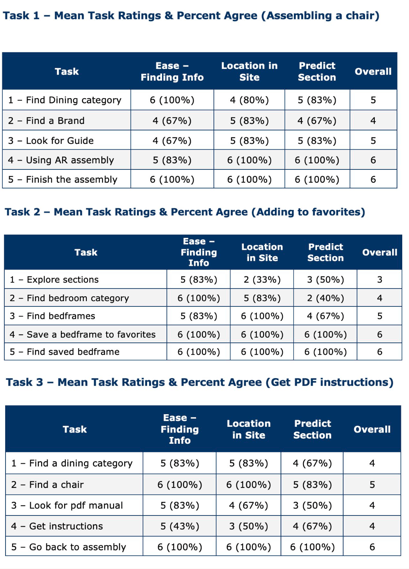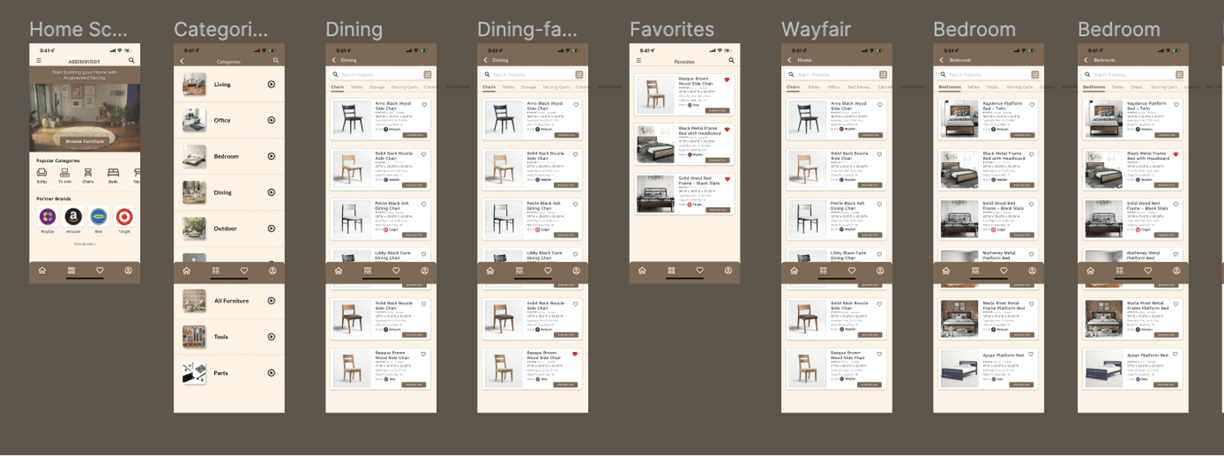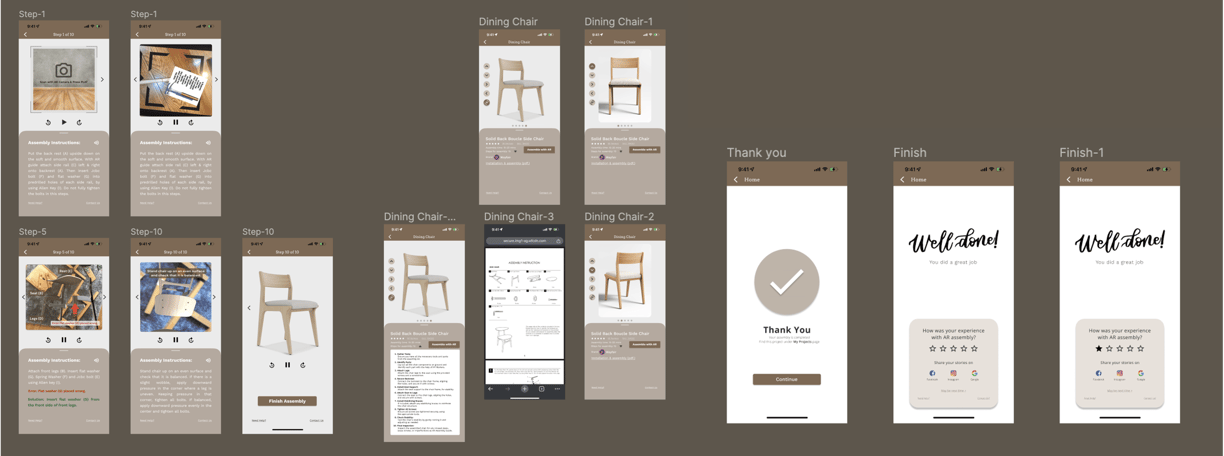ASSEMBUDDY
Furniture Assembly with
Object Recognition AR
December 2023
UI Design | Product Development
Role
Responsibilities
Welcome to Assembuddy, where cutting-edge technology meets user-centered design to transform furniture assembly into a seamless, intuitive experience. This project reimagines the process, making it more engaging, efficient, and tailored to individual needs.
To create a truly user-friendly solution, I conducted an in-depth study on user behavior, motivations, and challenges faced during self-assembly. Through User-Centered Design principles, I crafted an experience that simplifies assembly, reduces frustration, and enhances usability—ensuring that putting furniture together feels less like a chore and more like an effortless, personalized experience.
Lead Product designer
& Researcher
User Interface Design
User Research
AR App Development
Product Development
Usability Testing


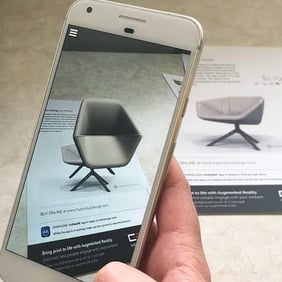
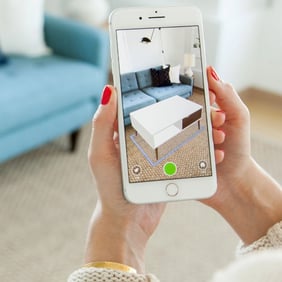
Traditional assembly manuals with unclear diagrams and lengthy instructions create frustration for users like Anna, a first-time apartment owner eager to set up her furniture. Without clear guidance, she struggles with mismatched pieces and confusion, turning an exciting DIY project into a stressful experience. There is a need for a more intuitive, user-friendly assembly solution that simplifies the process and enhances the overall experience.
Problem Statement
Stakeholders
Homeowners and DIY Enthusiasts:
○ Individuals who purchase and assemble furniture for their homes.
○ DIY enthusiasts who enjoy working on home improvement projects.
Furniture Retailers and Manufacturers:
○ Companies that produce and sell furniture.
○ Retailers looking to provide an enhanced assembly experience for their customers. Manufacturers who are interested in reducing assembly-related customer support inquiries and returns.
Interior Designers and Decorators:
○ Individuals interested in interior design who view furniture assembly as a creative aspect of home decor.
Objectives
Innovative AR Solution – Transform traditional assembly with an interactive, user-friendly AR experience.
Error Reduction – Minimize mistakes by offering real-time visual guidance for precise furniture assembly.
User-Centered Design – Ensure accessibility and ease of use for a diverse range of users.
Practical Application – Demonstrate how AR technology can solve real-world challenges beyond just furniture assembly and other assembly tasks.
Cross-Platform Compatibility – Develop a solution that works seamlessly across multiple devices and platforms.
Through my research, I identified a key opportunity: leveraging Augmented Reality (AR) to enhance the furniture assembly experience. By providing real-time, on-object guidance and error prevention, this solution aims to streamline the process, reduce frustration, and improve user satisfaction.
To validate this idea, I conducted a comprehensive User-Centered Design Study, diving into user needs, expectations, and challenges in the assembly process. The goal was to create a seamless, intuitive, and error-free experience that redefines how users approach DIY furniture assembly.
Hypothesis
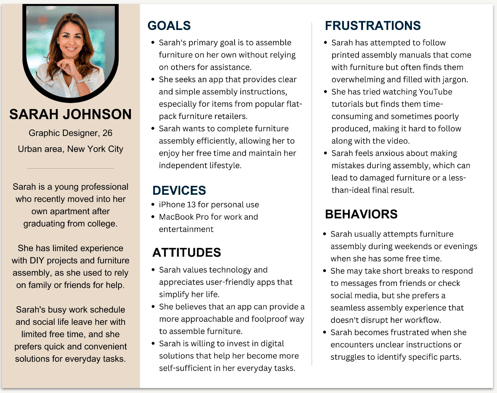

User Personas
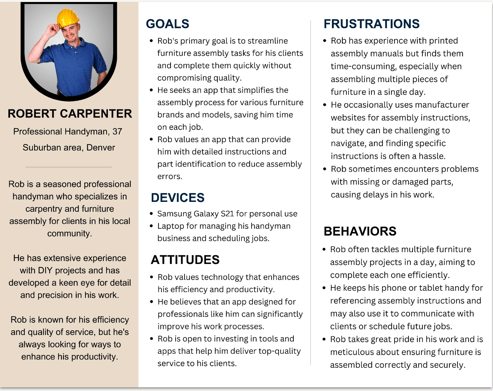

Empathy Map
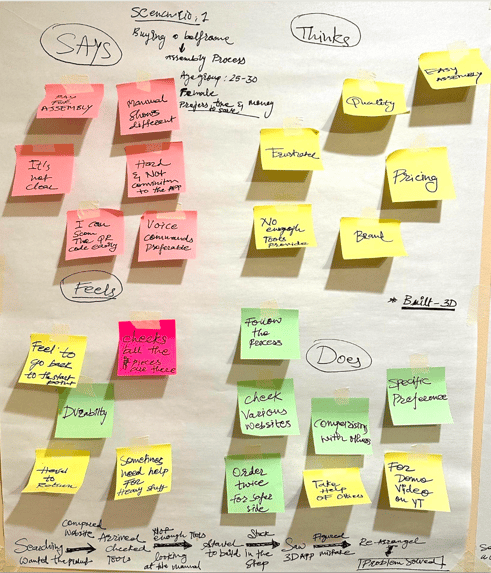

Mental Models
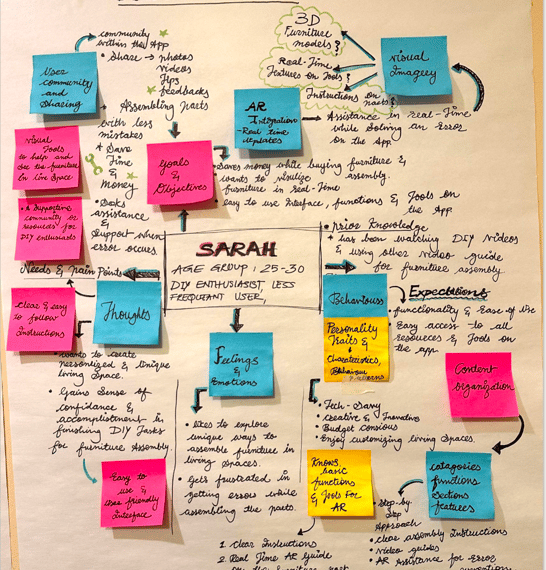

User Journey for Furniture Assembly Process
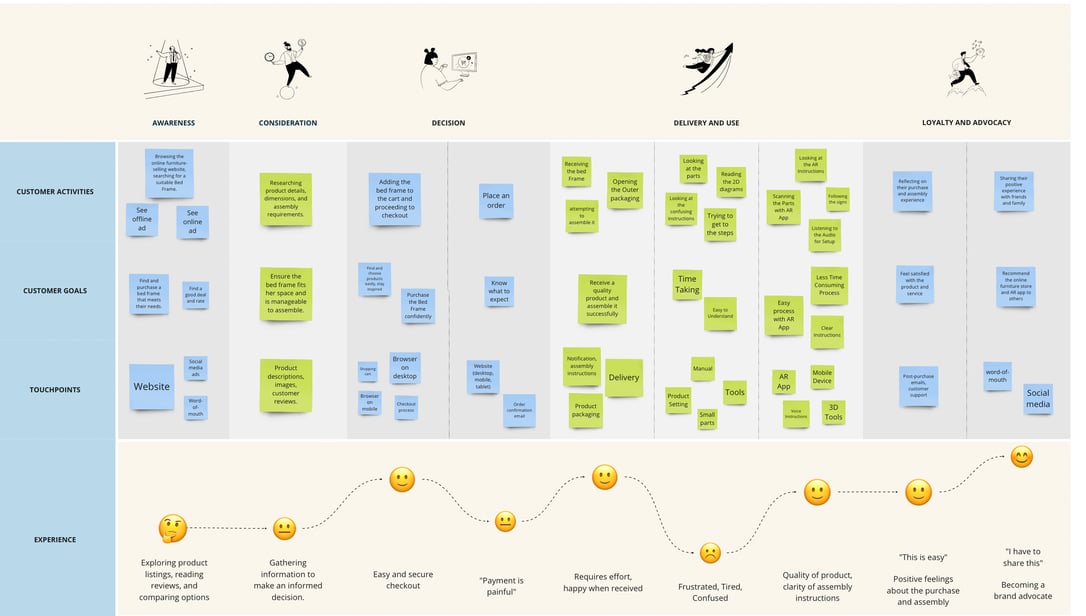

User Behavior Analysis – Studied how users interact with traditional furniture assembly, identifying pain points, challenges, and motivations to create a more seamless experience.
Object Recognition in AR – Explored advanced tracking algorithms to ensure precise identification of furniture components, enhancing real-time guidance.
Usability & UX Design – Applied user-centered design principles to make the AR interface intuitive, accessible, and easy to navigate for a diverse audience.
Error Analysis & Prevention – Identified common assembly mistakes and integrated AR-powered solutions to reduce errors and simplify the process.
Research Goals


Common Challenges – Users struggle with complex instructions, time management, and ensuring precision, making traditional assembly frustrating.
Familiarity with AR – While users know about AR, they haven't used it extensively but are open to exploring its potential for simplifying furniture assembly.
Key Insights




AR App Expectations – Users want clear visual guidance, real-time instructions, and error prevention features—all wrapped in a simple, customizable, and user-friendly experience.
Interface Preferences – An intuitive layout, easy navigation, and clear instructions are essential. Customization options for expert users add extra value, appealing to both beginners and professionals.
This research laid the foundation for an innovative, frustration-free assembly experience, merging technology and design to make furniture assembly effortless.
These insights guided the design and development of a seamless AR-powered assembly experience that prioritizes clarity, efficiency, and ease of use.
Content Development | Information Architecture
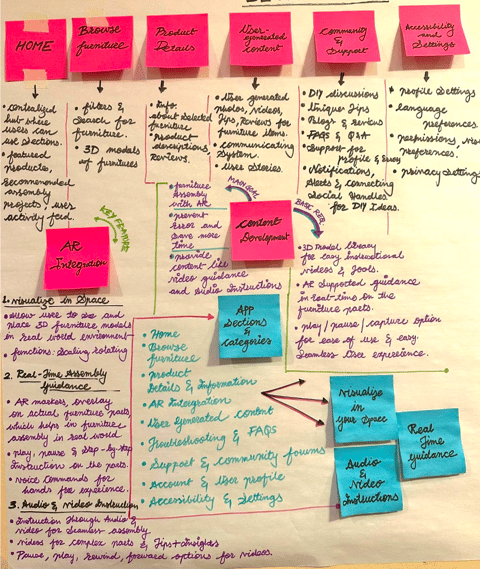

Visualize in your space
Real-time guidance
Audio instructions
Step 1: User Launches the App
Step 2: Browsing and Selection of Furniture
Step 3: Visualize in Your Space
Step 4: Real-time Assembly Guidance
Step 5: Error Prevention
Step 6: User-Controlled Timing
Step 7: Completion and Confirmation
Step 8: Feedback and User Review
Step 9: Return to Home Screen
Design Process
Lo-Fi Sketches
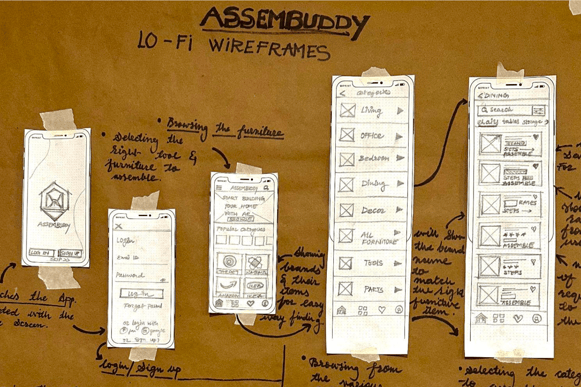

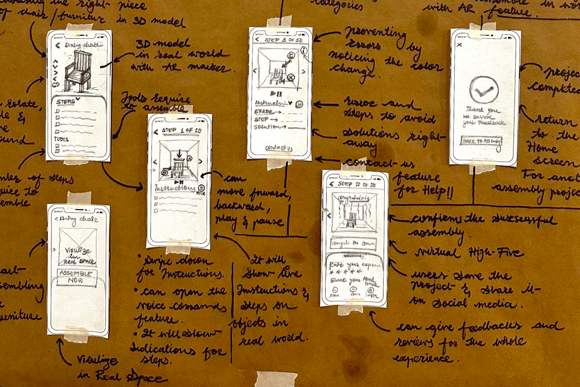

Development Process
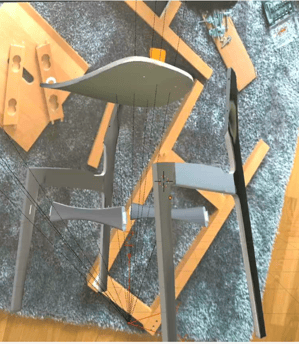

Version 1
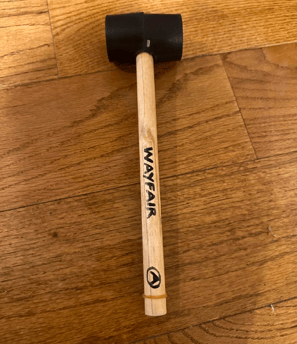

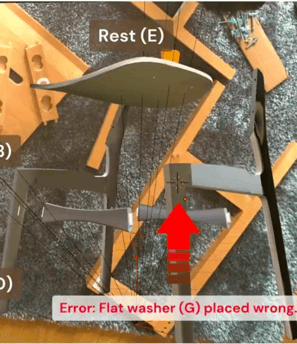

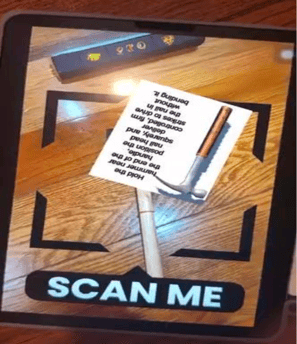

Version 2
Version 3
Version 4

High-Fidelity Prototype
Most of the participants (94%) agreed (i.e., agree or strongly agree) that the app was easy to use.
The majority of participants (85%) agreed they would use the app frequently and that the site’s content would keep them coming back.
Moreover, (67%) agreed that the Assembling with AR would make them want to explore the app more.
(85%) agreed that the visuals and app’s interface is easy to navigate through.
